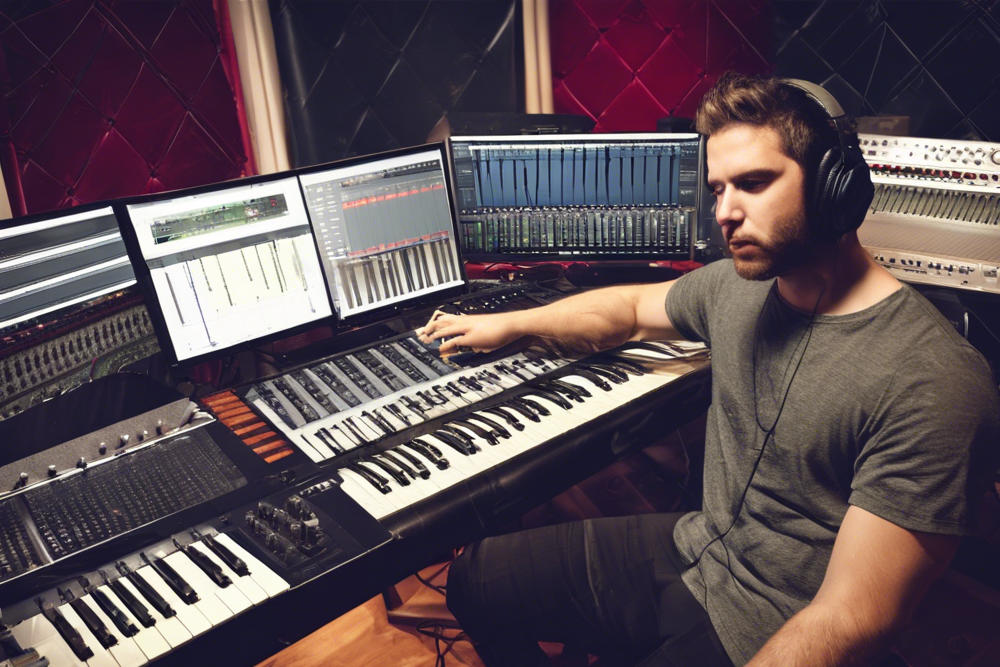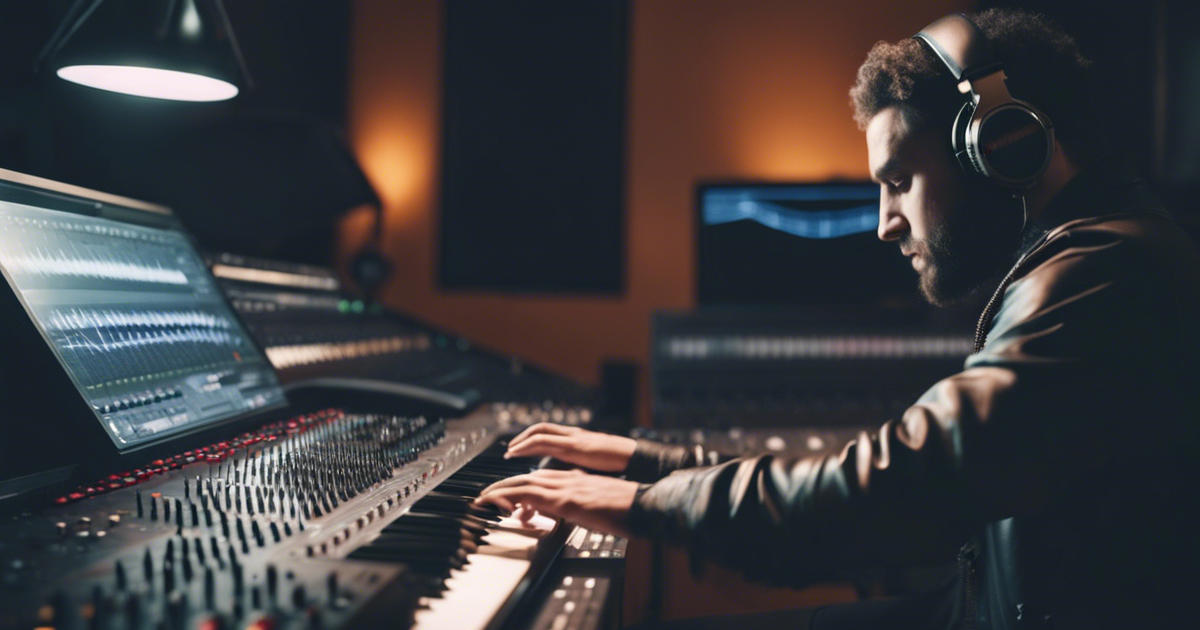Estimated reading time: 6 minutes
How to fix peaking audio? Start by preventing it with proper recording techniques and repair it using de-clipper plugins, compression, and manual editing. This guide provides essential tips to restore your audio to clear, distortion-free quality.
Table of contents
Understanding Peaking Audio
Peaking audio, also known as audio clipping, occurs when the audio signal exceeds the maximum level that can be accurately represented in a digital system. This results in distortion and a loss of audio quality. To understand how to fix peaking audio, it’s crucial to first grasp the concept of audio waveforms and signal levels.
When an audio signal peaks, it means that the amplitude of the waveform has reached or surpassed the maximum level that can be recorded or played back. This leads to a “clipped” waveform, where the tops and bottoms of the wave are cut off, resulting in distorted sound.
Common Causes of Peaking Audio:
- Input levels set too high
- Improper microphone gain
- Loud sound sources
- Inadequate dynamic range in recording equipment
Identifying Peaking in Your Audio
Before you can fix peaking audio, you need to be able to identify it. Here are some ways to spot audio clipping:
- Visual Inspection: Look at the waveform display in your audio software. Clipped audio appears as flattened peaks at the top or bottom of the waveform.
- Listen Carefully: Peaking audio often sounds distorted, harsh, or “crunchy,” especially during louder parts of the recording.
- Use Level Meters: Most audio interfaces and software have level meters. If the meter hits the red zone or shows 0 dB, it’s likely that clipping is occurring.
- Check Amplitude Statistics: Some audio editing software offers tools to analyze the amplitude of your audio files, which can reveal instances of clipping.

Prevention: Best Practices for Recording
The best way to deal with peaking audio is to prevent it from happening in the first place. Here are some tips for recording clean audio:
- Set Proper Input Levels: Always start with your input levels low and gradually increase them. Aim for peak levels around -6 dB to -12 dB to leave headroom.
- Use Appropriate Microphones: Choose the right microphone for your sound source. Dynamic microphones are often better for loud sources, while condenser microphones work well for softer sounds.
- Monitor Your Levels: Keep an eye on your level meters during recording. If you see them consistently hitting the red, lower your input gain.
- Use a Limiter: Consider using a hardware or software limiter during recording to prevent unexpected peaks.
- Perform Test Recordings: Before your main recording session, do a test run to check levels and adjust as necessary.
Fixing Peaking Audio in Post-Production
If you’re working with audio that has already been recorded and contains peaks, there are several methods you can use to improve the sound quality:
1. Use De-clipper Plug-ins
Many audio editing software packages offer de-clipper plug-ins. These tools analyze the waveform and attempt to reconstruct the clipped portions of the audio.
Popular de-clipper plug-ins include:
- iZotope RX De-clipper
- Accusonus ERA De-clipper
- Acon Digital Restoration Suite
2. Apply Gentle Compression
Using a compressor can help tame peaks and even out the overall level of your audio. Here’s how:
- Set a low ratio (e.g., 2:1 or 3:1)
- Adjust the threshold to catch only the highest peaks
- Use a fast attack and medium release time
- Apply makeup gain to restore overall volume
3. Utilize Multiband Compression
For more precise control, consider using a multiband compressor. This allows you to target specific frequency ranges that may be causing problems.
4. Manual Waveform Editing
In some cases, you may need to manually edit the waveform:
- Zoom in on the clipped sections
- Use the pencil or draw tool to redraw the peaks
- Apply a slight fade to smooth out the edited areas
Remember, manual editing should be done carefully to avoid introducing new artifacts.

Tools and Software for Audio Repair
Several software options are available for fixing peaking audio:
- iZotope RX: A comprehensive audio repair toolkit with advanced de-clipping features.
- Adobe Audition: Offers built-in tools for audio restoration, including a Declip effect.
- Acon Digital Restoration Suite: Includes a dedicated De-clip module for repairing clipped audio.
- Audacity: A free, open-source option with basic clipping repair tools.
- Waves Audio Restoration Bundle: A collection of plug-ins designed for various audio repair tasks, including de-clipping.
Video: How to Fix Audio Peaking in Adobe Audition CC
Advanced Techniques for Professional Results
For those seeking professional-grade results, consider these advanced techniques:
- Spectral Repair: Use spectral editing tools to isolate and repair specific frequencies affected by clipping.
- Blend with Unclipped Takes: If you have multiple recordings of the same performance, blend the clipped sections with clean versions from other takes.
- Re-amping: For instruments, consider re-amping the signal through clean equipment to recreate a non-clipped version.
- Harmonic Enhancement: After de-clipping, use harmonic enhancers to restore some of the lost high-frequency content.
- Parallel Processing: Blend the repaired audio with the original to maintain some of the natural characteristics of the recording.
Conclusion
Fixing peaking audio can be challenging, but with the right techniques and tools, it’s possible to significantly improve the quality of clipped recordings. Remember that prevention is always better than cure, so focus on proper recording techniques to avoid clipping in the first place. However, when you do encounter peaking audio, apply these methods systematically to achieve the best possible results.
Always backup your original files before attempting any repairs, and don’t be afraid to experiment with different techniques to find what works best for your specific audio issues. With practice and patience, you’ll be able to rescue even severely clipped audio and produce professional-sounding results.
Related Posts
- How to Make Your Beats Louder: Tips for Maximum Volume and Quality
- How to Make Loops: A Guide for Music Producers
- How to Export Stems in FL Studio? A Step-by-Step Guide
- How to Sidechain? A Step-by-Step Guide to Achieve that Perfect Pump
- How to Harmonize: A Beginner’s Guide to Creating Beautiful Vocal Harmonies
FAQs
Peaking audio, or audio clipping, happens when the audio signal exceeds the maximum level that can be accurately captured, leading to distortion. It occurs due to high input levels, improper microphone gain, loud sound sources, or inadequate recording equipment.
You can identify peaking audio by visually inspecting waveforms for flattened peaks, listening for distortion or harshness, checking level meters for red zones or 0 dB readings, and using amplitude analysis tools in audio editing software.
Prevent peaking by setting proper input levels, using appropriate microphones, monitoring levels, employing limiters, and conducting test recordings. Aim for peak levels around -6 dB to -12 dB to leave sufficient headroom and avoid clipping.
Fix peaking audio using de-clipper plugins, gentle compression, multiband compression, or manual waveform editing. These techniques help reconstruct clipped portions, tame peaks, and smooth out the audio for improved sound quality.
Recommended tools include iZotope RX, Adobe Audition, Acon Digital Restoration Suite, Audacity, and Waves Audio Restoration Bundle. These software options offer various features and plugins for effective audio repair, including de-clipping and other restoration techniques.
